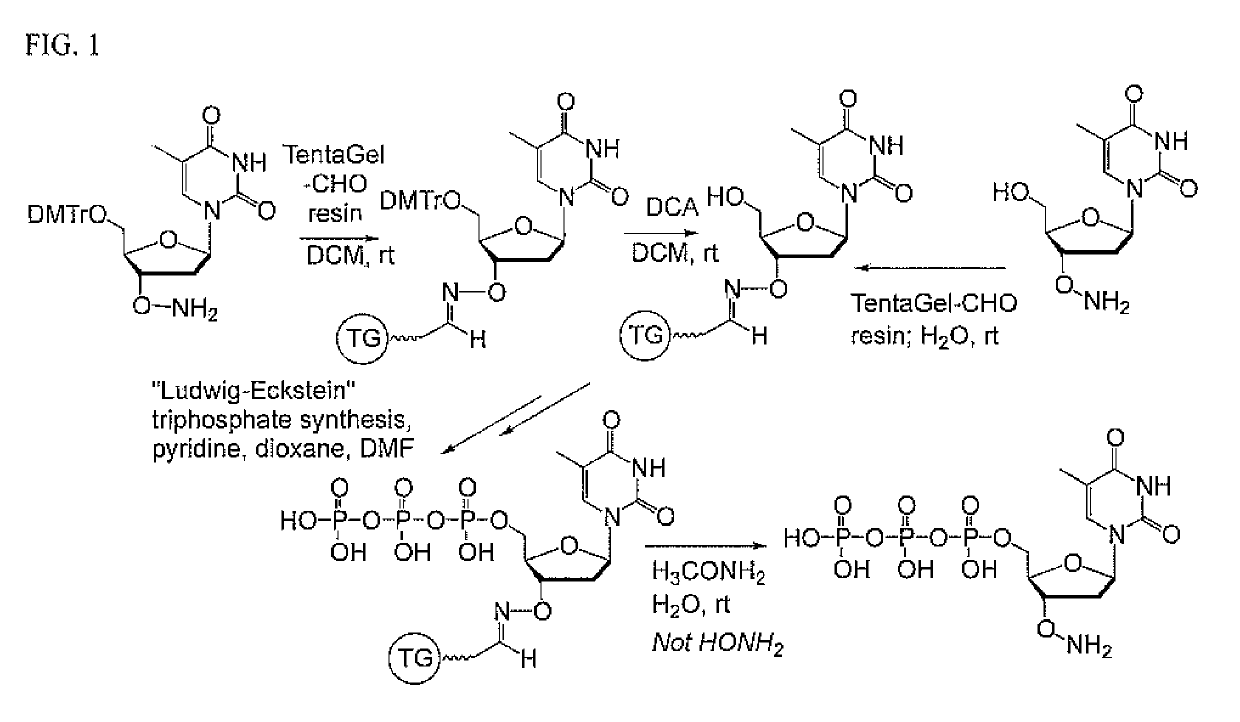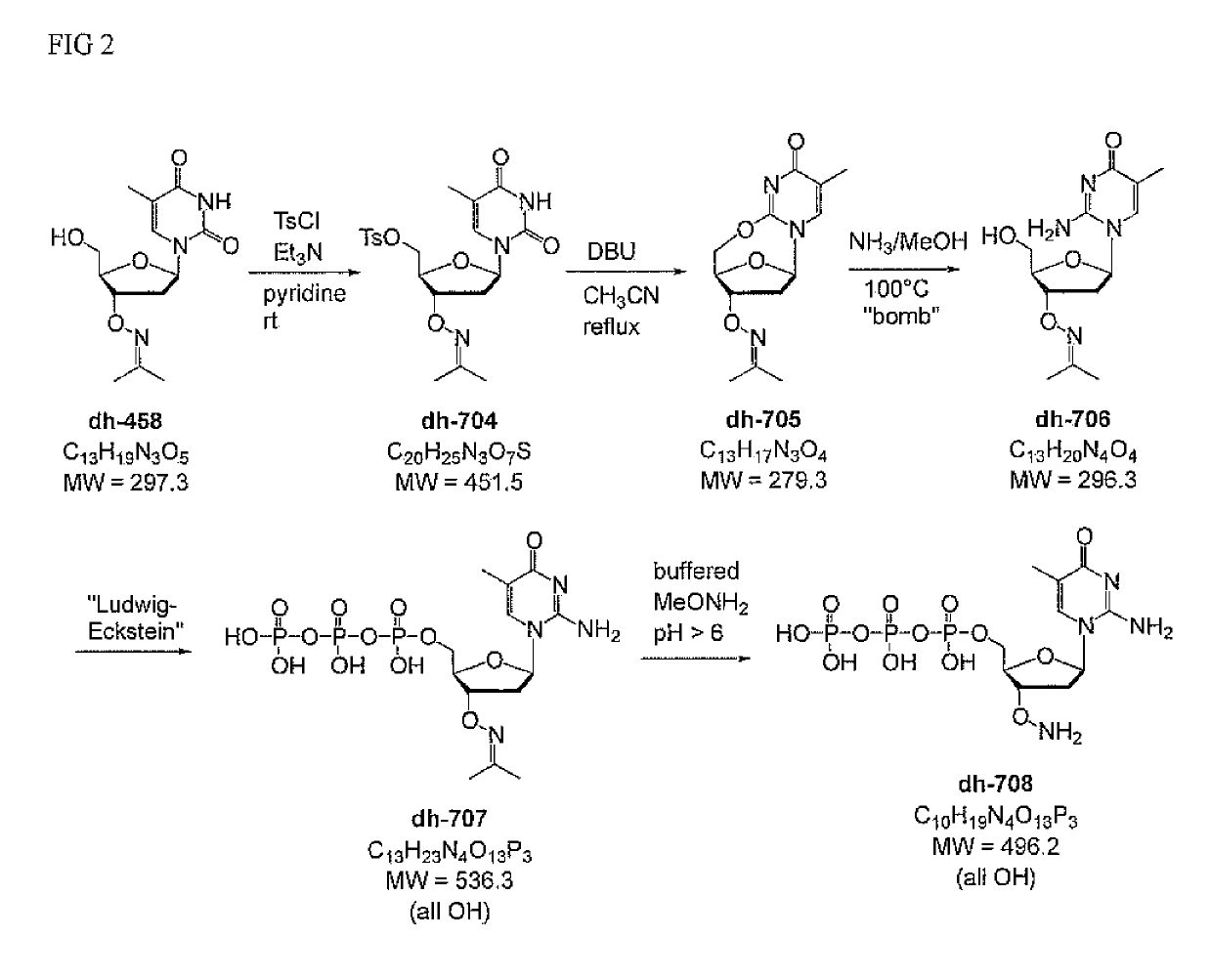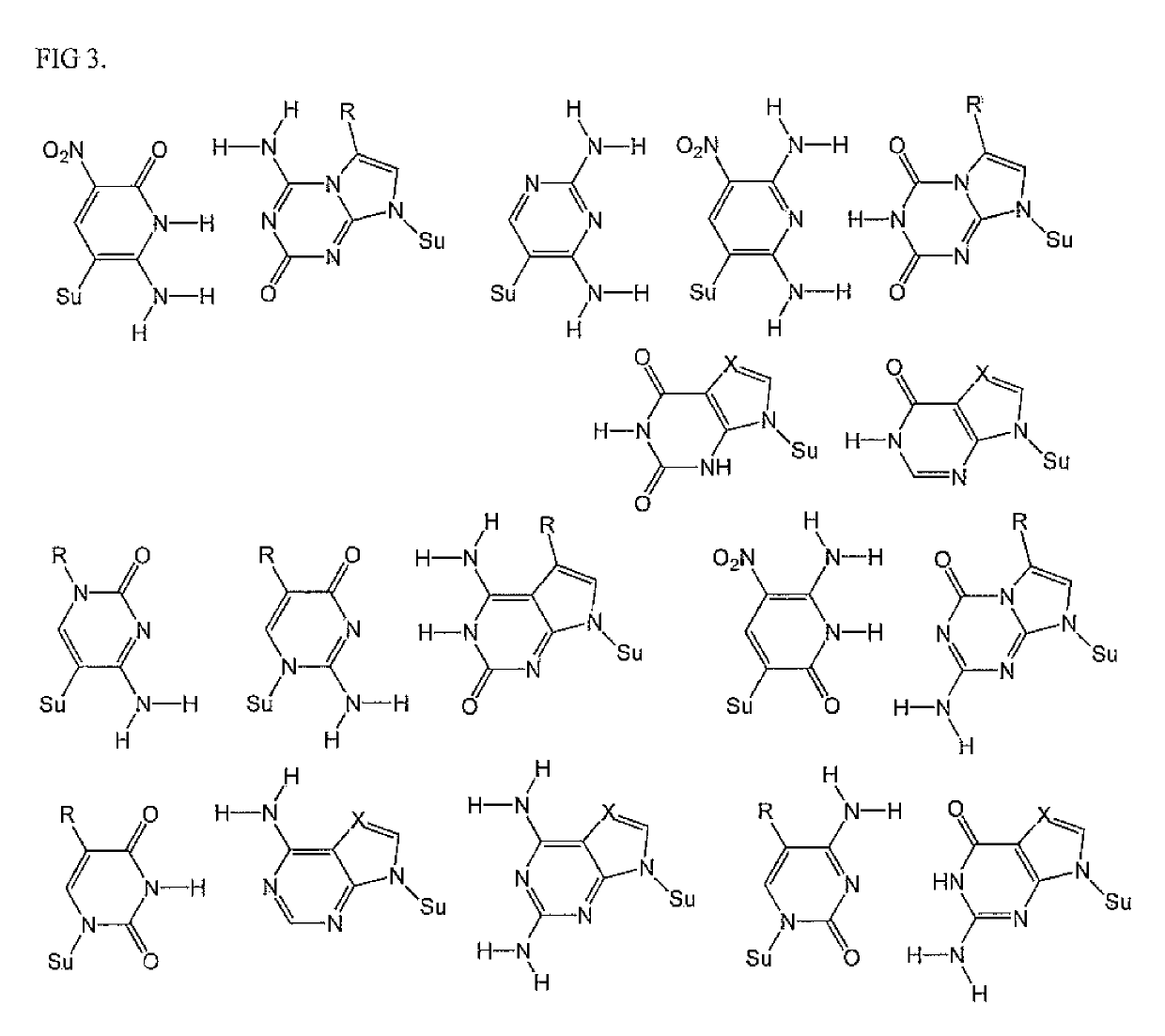Nucleoside triphosphates with stable aminoxy groups
a technology of aminoxy groups and nucleoside triphosphates, which is applied in the field of nucleic acid analog chemistry, can solve the problems of intrinsic reactivity of the 3′-onhsub>2 /sub>moiety itself, high cost of triphosphate synthesis, and high cost of synthesis
- Summary
- Abstract
- Description
- Claims
- Application Information
AI Technical Summary
Benefits of technology
Problems solved by technology
Method used
Image
Examples
example 1
Thymidine Derivatives
A. Loading of the Nucleoside onto the Resin.
[0036]TentaGel-CHO HL-form (1.0 g, carrying 0.47 mmol of aldehyde carbonyl) was weighed into a peptide synthesis vessel (“PSV”, not silanized, 25 mL volume) and pre-swollen overnight in toluene (20 mL) with shaking at room temperature. After 18 h, the solvents were removed, and the support was washed several times with toluene, dichloromethane (DCM) and methanol (MeOH) (3×20 mL each solvent), and then with then water (20 mL). The resin was then swollen in aqueous NaOAc buffer (50 mM, pH 5, 20 mL) and drained.
[0037]Separately, crude thymidine with a free underivatized 3′-OH group (lyophilized) was dissolved in NaOAc buffer (50 mM, pH 5, 20 mL), microfiltered (0.45 μm; only little insoluble material was seen) and added to the resin. The vessel containing both the resin and the thymidine derivative was shaken at room temperature.
[0038]The progress of the reaction was followed by UV measurement of the aqueous solution. Aft...
example 2
Methylisocytidine Derivatives
[0047]Synthesis of disoMeCTP-ONH2 was prepared by aminolysis of 2,5′-anhydro-T-ONH2 (preferably as the ON-phthalimide), followed by triphosphate synthesis, analogous to the procedure published by [Jurczyk et al. (1998) Helv. Chim. Acta 81, 793-811]. (FIG. 4)
[0048]The triphosphate oxime dh-707 was prepared by the procedure from Jurczyk et al., with some minor modifications. Since this nucleoside analog is acid sensitive (de-pyrimidinylation at acidic pH, at least at pH2 cleavage of the oxime (usually carried out at pH 5.5) to the ready-to-use aminoxy terminator dh-708 was adjusted to run at slightly higher pH.
PUM
| Property | Measurement | Unit |
|---|---|---|
| pH | aaaaa | aaaaa |
| pH | aaaaa | aaaaa |
| bath temperature | aaaaa | aaaaa |
Abstract
Description
Claims
Application Information
 Login to View More
Login to View More - R&D
- Intellectual Property
- Life Sciences
- Materials
- Tech Scout
- Unparalleled Data Quality
- Higher Quality Content
- 60% Fewer Hallucinations
Browse by: Latest US Patents, China's latest patents, Technical Efficacy Thesaurus, Application Domain, Technology Topic, Popular Technical Reports.
© 2025 PatSnap. All rights reserved.Legal|Privacy policy|Modern Slavery Act Transparency Statement|Sitemap|About US| Contact US: help@patsnap.com



